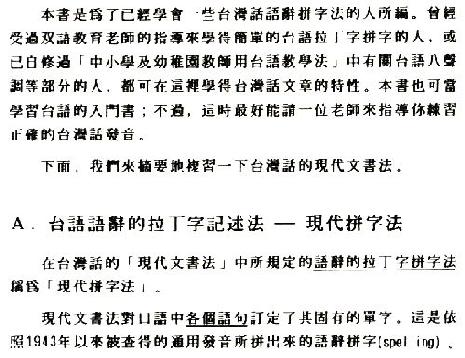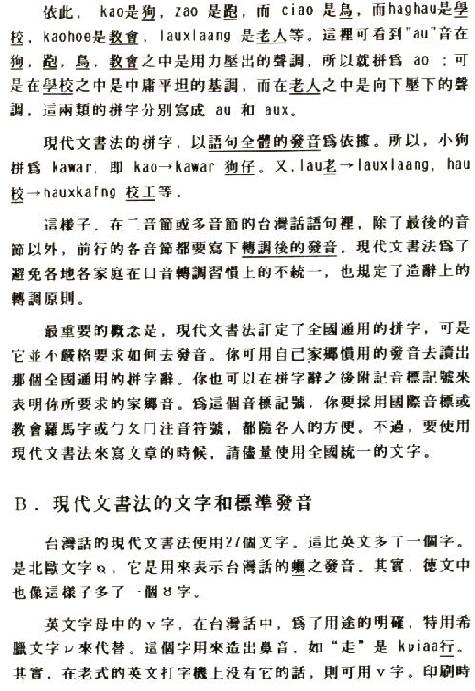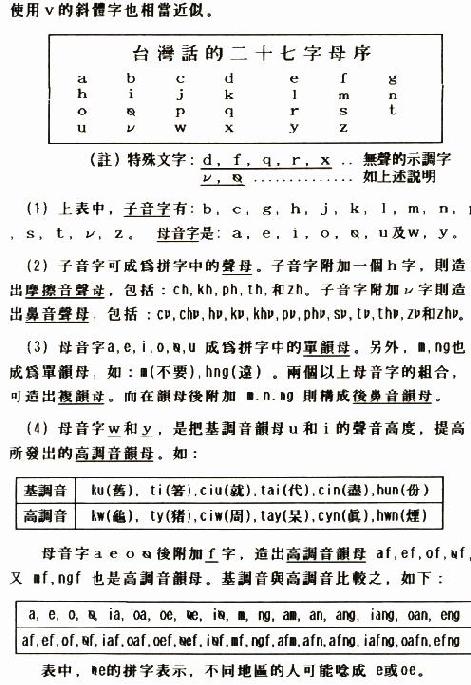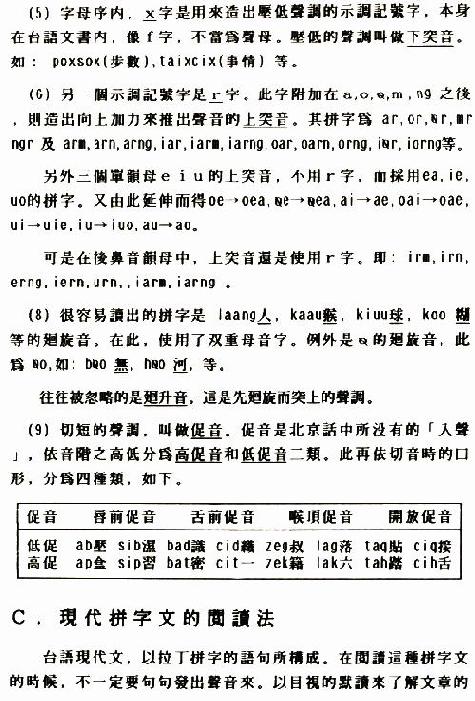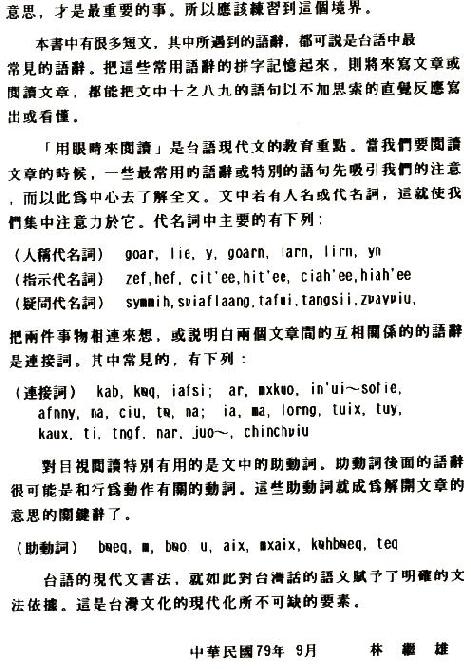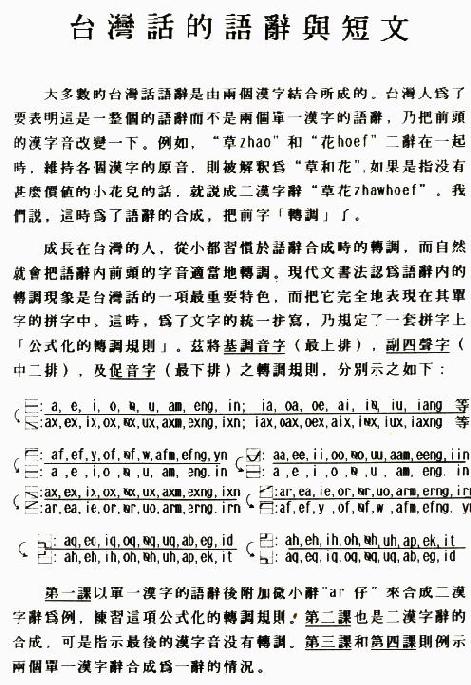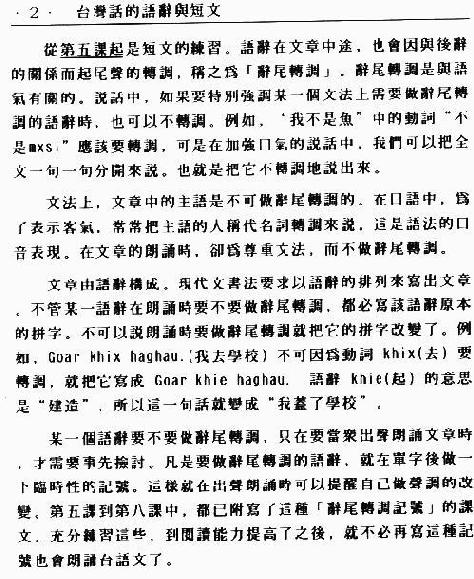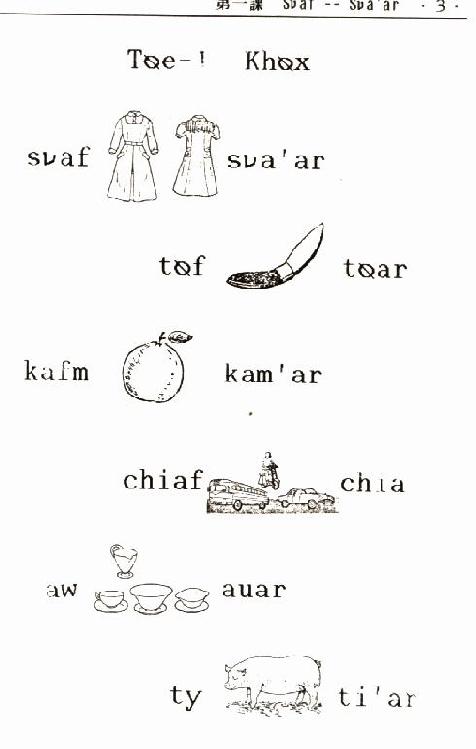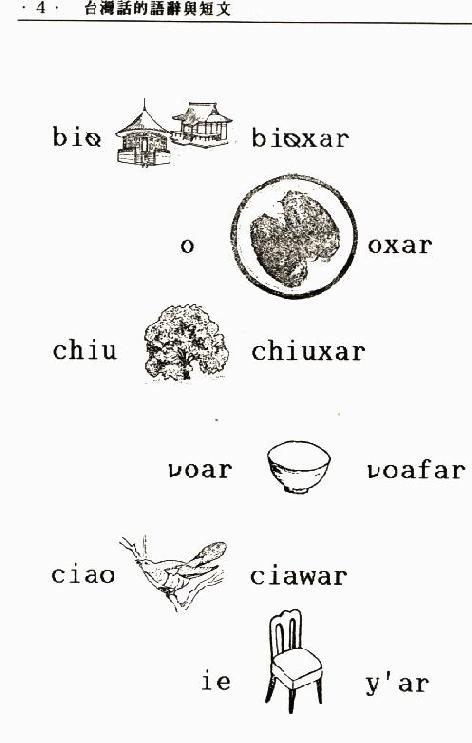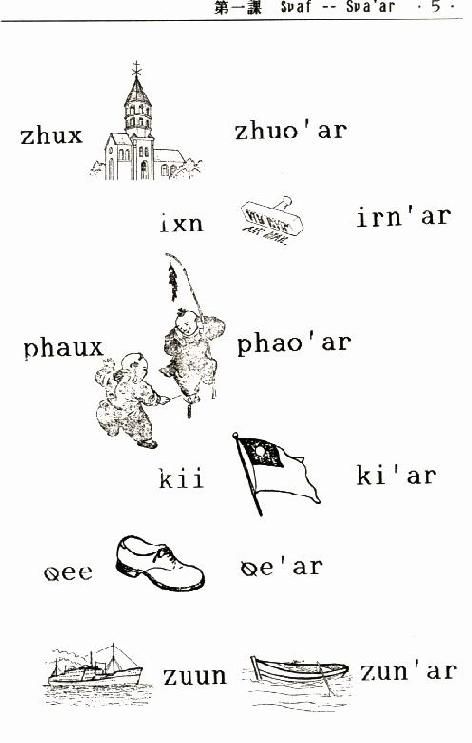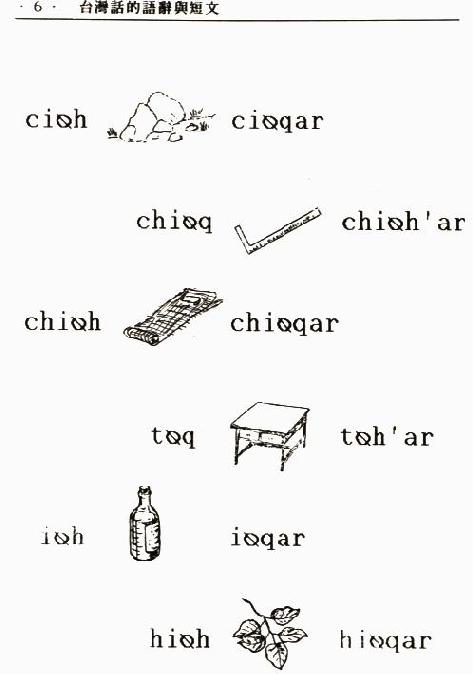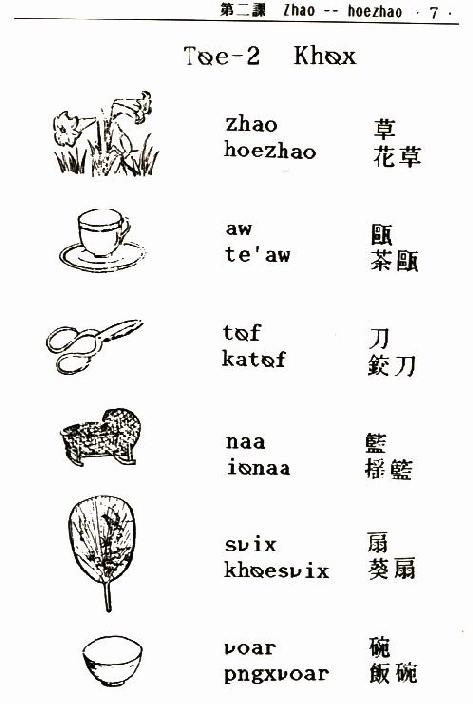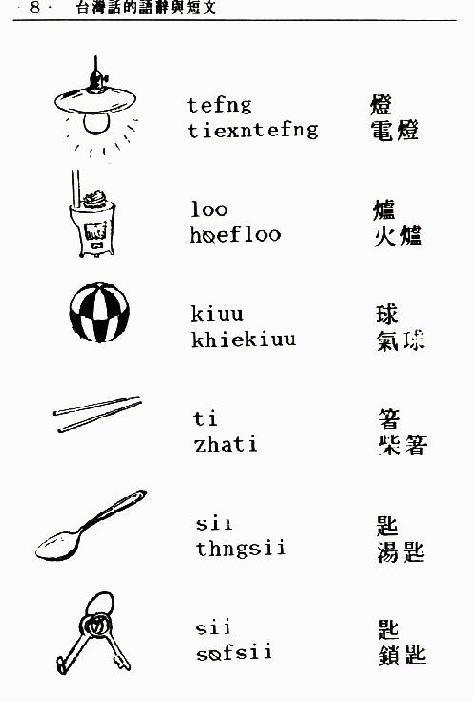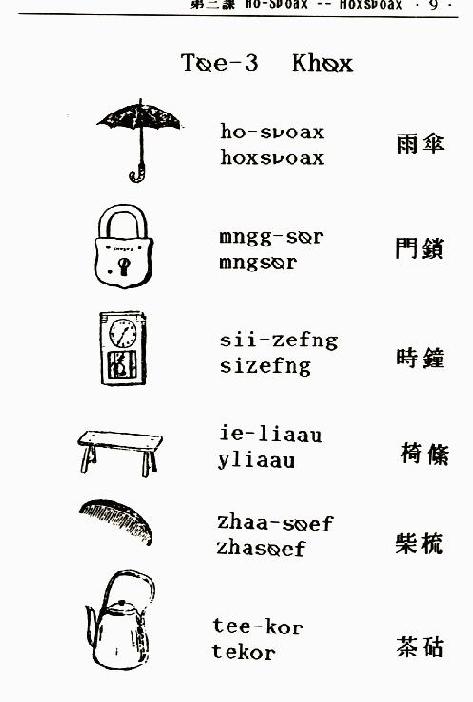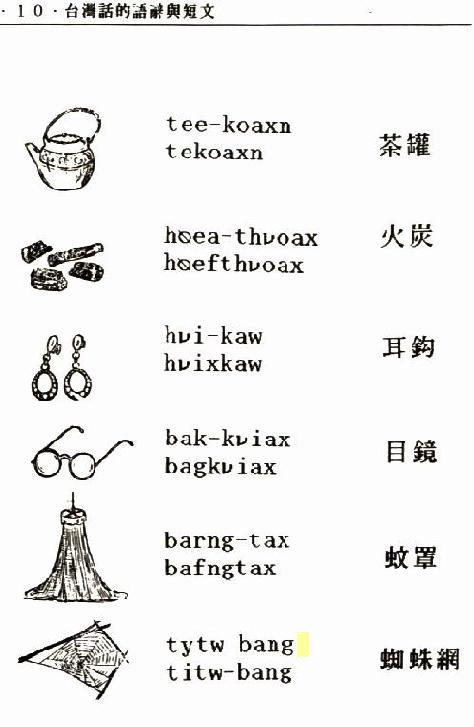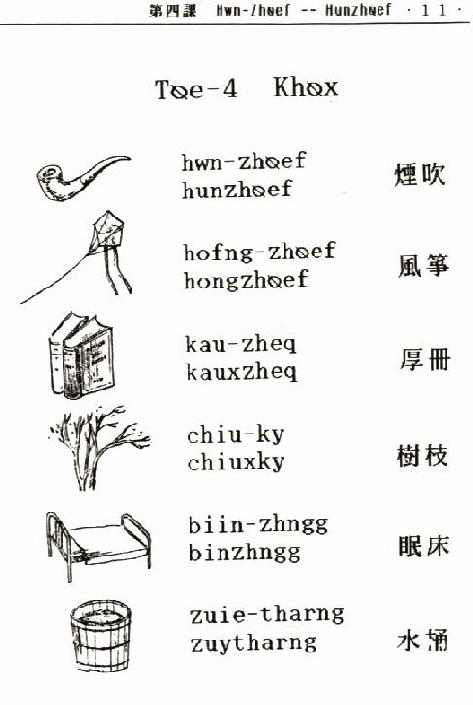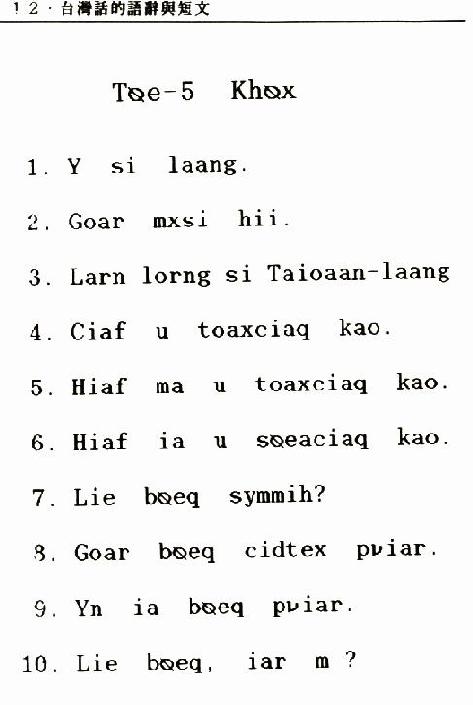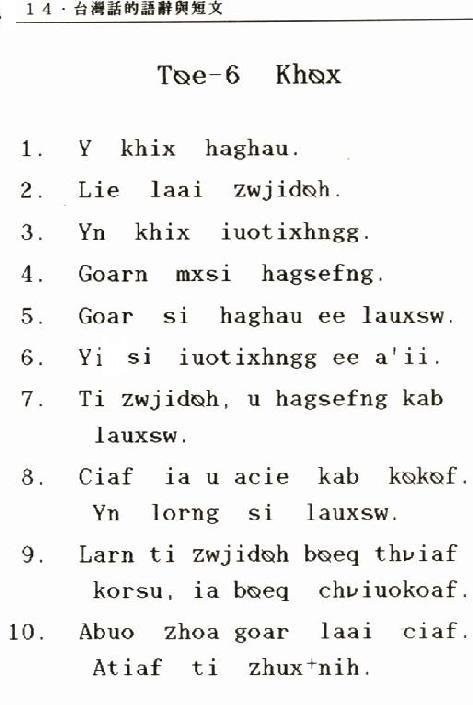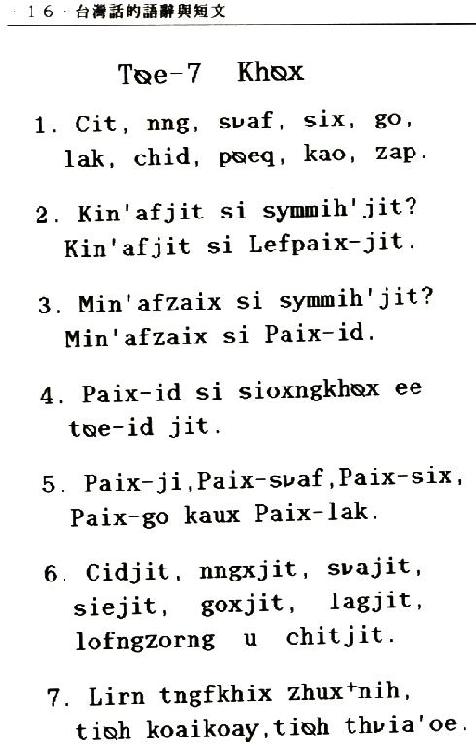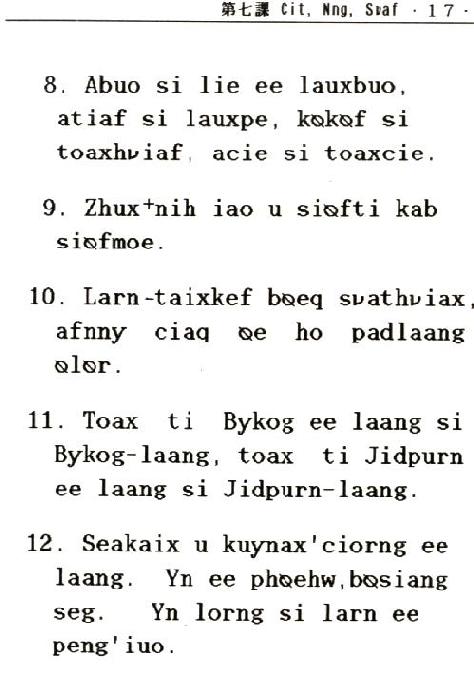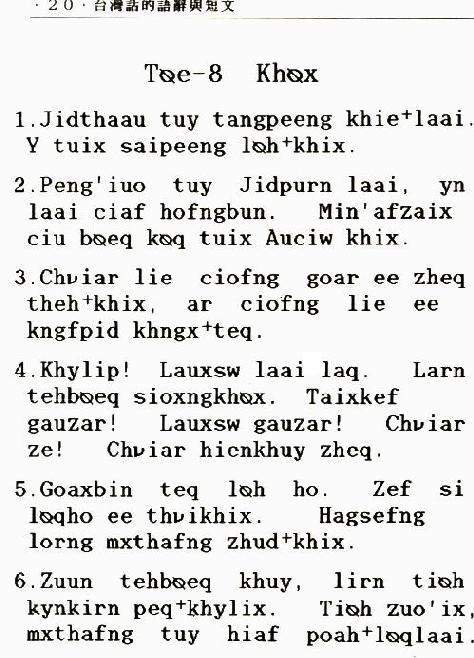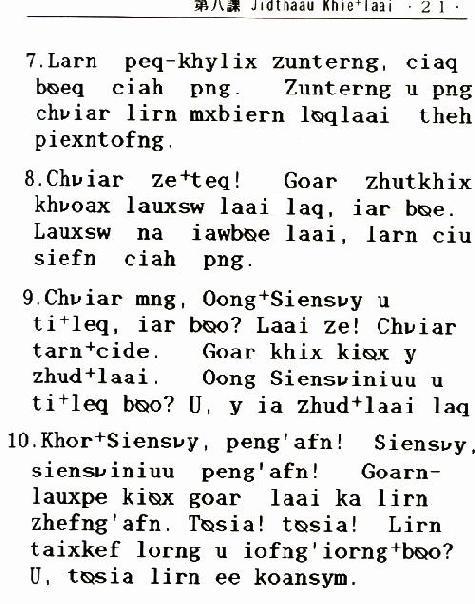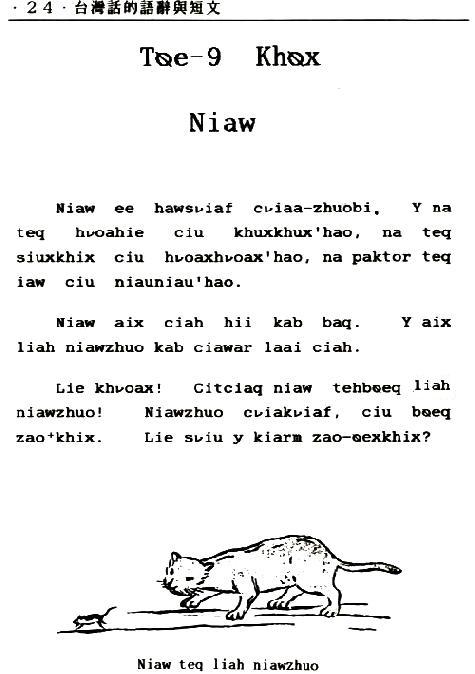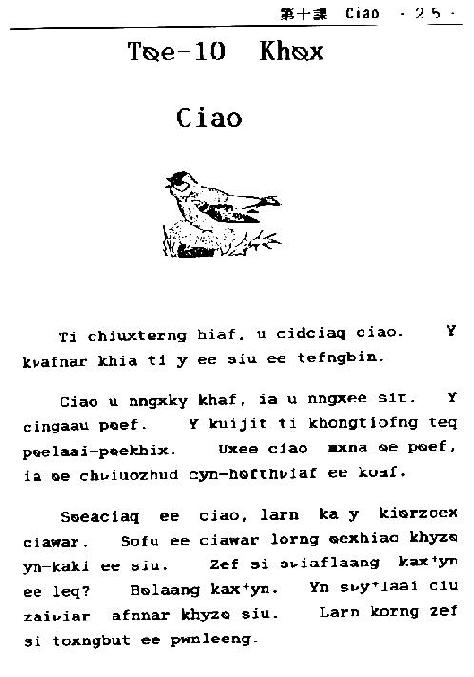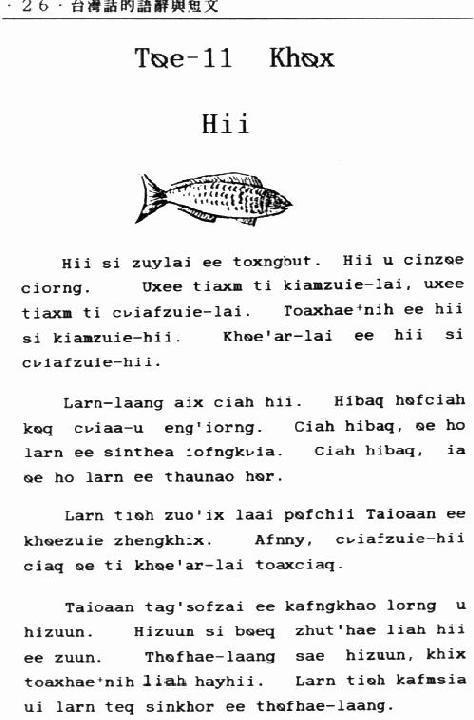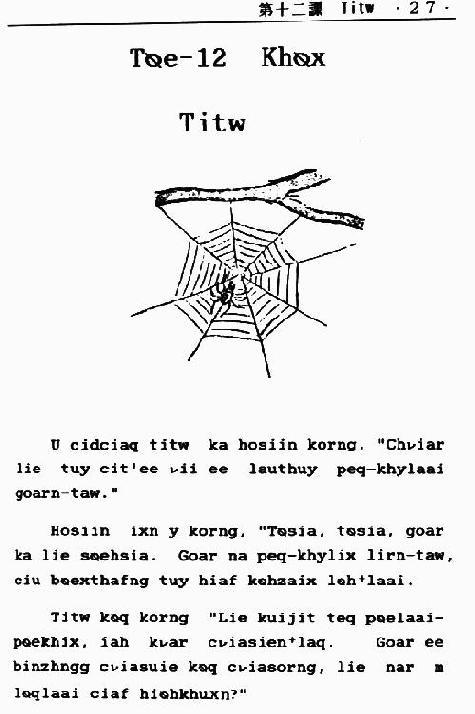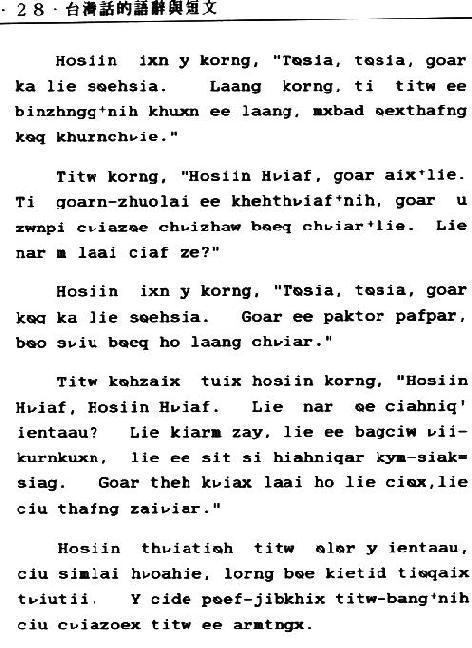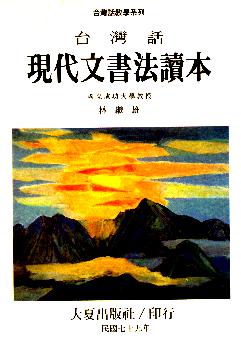 |
.
.
 |
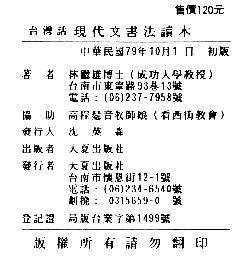 |
-
- - - - - - - - - - - - - - - - - -Preface
Mother tongue is a colloquial language of sounds. The Modern Literal Taiwanese (MLT) is the most ideal language of spoken Taiwanese. It is a language based on every definite word with fixed meaning. When we want to lean Taiwanese with this Modern Literal Taiwa- nese, we should (1) memorize the spelling and meaning of every word in the sentence, (2) study the sequencial arrangement of words in accord with the grammar, and (3) familiarize the customary mood and expression of Taiwanese people in speaking. Thus, we will understand the reading and compositioon of Taiwanese sentence. furthermore, to be able to recite the sentence before an audience, we should understand the tonal expression of each word at a specific position of the given sentence, and know well the possible change of the tone of the word. |
